Estou postando uma reportagem que achei maravilhosa! ^^
CLASSIC TRACKS: Dire Straits 'Money For Nothing'
Producers: Mark Knopfler, Neil Dorfsman
The Brothers In Arms album turned Dire Straits into one of the biggest-selling bands of all time, thanks to some technical innovation, tough decision-making, and that guitar sound — which was created by accident.

That ain't workin',' sang Mark Knopfler, summing up the man in the street's view of the rock & roll lifestyle. 'You play the guitar on the MTV... Money for nothing and your chicks for free.' Following its release in 1985, Dire Straits' 'Money For Nothing' topped the US charts, as did the associated Brothers In Arms album, one of the first to be released on CD. Indeed, Dire Straits' fifth studio opus proved to be the London band's crowning achievement, selling more than 25 million copies worldwide, nine million of them in the US alone, while in the UK it was the biggest-selling long player of the 1980s. It was also the first album to shift a million copies in the new CD format, and was a career highlight for Neil Dorfsman, who co-produced the record along with Knopfler while also engineering it and earning the first of three Grammy Awards for his efforts.
"I actually didn't expect the record to do what it did," Dorfsman says. "I knew the band was very popular, but no one ever thought the album would turn out to be so huge."
Neil Dorfsman's career behind the console commenced at New York City's Electric Lady Studios in 1976, after he'd sent out about 125 resumés looking for work in the record business while working at a voiceover facility in Manhattan. "Electric Lady called me and said they needed somebody that night to assist," he recalls. "So I went there and got the gig. I literally did not know a thing about multitrack recording, but I showed keenness and ended up being trained by Eddie Kramer."
In 1978, one of the albums that the two men worked on, Foghat's Stone Blue, was mixed at the Power Station, where Dorfsman was put on staff the following year en route to pushing faders on records by Bruce Springsteen, Bob Marley, Bonnie Tyler, Carly Simon, Bob Dylan and Mark Knopfler, before going freelance as a producer/engineer in 1984. It was, in fact, Dorfsman's 1981 recording of the Wanderlust album by jazz vibraphonist Mike Mainieri that first brought him to Mark Knopfler's attention, and thereafter Dorfsman found himself working on both Dire Straits' 1982 album Love Over Gold and Knopfler's 1983 Local Hero movie soundtrack.

"I think Mark was at a stage in his career where he was looking to do something other than straightforward rock music," Dorfsman says. "He was always interested in doing a lot of different things. I remember him studying jazz and really woodshedding a lot on his guitar at home, and it knocked me out how adventurous he was, trying to expand his horizons. He just loved jazz and that whole New York scene."
Hence the jazz-rock fusion that characterised the Love Over Gold album, along with the orchestral arrangements that distinguished it from its more pop-oriented successor, Brothers In Arms, which began to take shape at AIR Montserrat in November 1984. "I'd always wanted to work at AIR Montserrat, and I was stunned when we got there because the studio was tiny," Dorfsman remarks. "Still, it had a beautiful old Neve 8078, which I think was the best-sounding board Neve ever made, and that was the sound of the records that came out of there. Shortly after Brothers In Arms, they replaced it with an SSL, and I thought that was a huge mistake."
All of the material was written by Mark Knopfler and routined by him and his bandmates prior to the start of recording, and when Neil Dorfsman first heard it at AIR Montserrat it was via live performance rather than demos. While Knopfler played guitar, the rhythm section consisted of John Illsley on bass, Terry Williams on drums, Alan Clark on piano and Hammond B3, and Guy Fletcher — new to the line-up — playing a synth rig that consisted of a huge new Yamaha DX1, a couple of Roland keyboards and a Synclavier. The problem was where to put everybody. Despite its hallowed reputation and beautiful location, AIR Montserrat was a fairly basic facility with a small 20 x 25-foot recording space that offered virtually no isolation.
"It was pretty torturous," Dorfsman recalls. "It was a good-sounding studio, but the main room itself was nothing to write home about. The sound of that studio was the desk. Still, we crowded everybody in there, recording with at least three or four guys on every tune, while I built little rooms out of gobos and baffles and blankets. The reason for going to Montserrat was that it was a great place to hang out and it was very relaxed, so you could focus on what you were doing. And the board was so good that anything you put through it just sounded great. However, you wouldn't go there to get an ambient room recording.
"Generally, when I record, I like to record close and have some ambient stuff as well — some distant mics on guitars, the drums, whatever — but you really couldn't do that there. Everything had to be close-miked and quite heavily baffled, which was not a style I liked. I'd grown up working at the Power Station, which had a really, really large room with a really big isolation room, so you could isolate everything but still have ambience on all the instruments. As a result, it was very difficult for me to get my head around the situation in Montserrat — a very '70s style of recording; close-miked, dead and you would leave it to the mix to create ambience. I didn't enjoy that part of it, but because the board sounded so good I still loved working there, despite the acoustics of the room."
The four non-drumming members of Dire Straits, in photos taken during the recording sessions at AIR Montserrat. From left: Mark Knopfler, bassist John Illsley, synth player Guy Fletcher and keyboard player Alan Clark.
Utilising the limited space to best effect, the drum kit sat in the far left corner of the live area, facing the control room, and was miked with Sennheiser MD421s on the toms, an Electrovoice RE20 and AKG D12 on the kick drum, a Shure SM57 and AKG C451 with a 20dB pad on the snare, 451s for overheads and the hi-hat, and Neumann U87s set back a little in order to attain at least some kind of ambience. This was what Dorfsman describes as the standard Power Station setup, despite the fact that AIR Montserrat presented him with a very different type of recording.
"I like to eliminate as many variables as possible in terms of the mics and the gear," he explains. "That way I know if it's the drums that are sounding bad or it's the room that's sounding bad. Unless I'm really confident where I'm working and I've worked there a lot, I won't experiment too much. I prefer to get down to the lowest common denominator. Like if I'm working on a Neve and I'm adding more than a certain amount of treble on a channel, I'll know that something's wrong. So, if I use a 421 on a tom-tom and I'm adding more than 4 or 5 dB of 10kHz, then I know 'OK, these heads are too dull,' or 'There's something wrong with the tuning of the drums,' or something else is going on. By starting with my basic miking technique and trying to always record on a vintage Neve, I've got a base line that enables me to work very quickly.
"As it happens, these days I've got to the point where I'll experiment much more and try all sorts of different mics on drums and other stuff. But back then, really early in my career, I didn't want to get too adventurous. What's more, there weren't all that many mics to choose from. It was a much more basic style of recording and we tried to work fast, so I didn't want to introduce too much experimentation into the process until we got to overdubs."
The piano, sitting in its own very tight, dead-sounding booth in the far right corner of the live room at AIR Montserrat, was miked with AKG C414s, while the Hammond B3 wasn't very far away — nothing was very far away — and its Leslie speaker was either stuffed into a little airlock next to the control room or even placed outside when it was leaking too much into the room. The bass amp, meanwhile, was recorded inside a small vocal booth with a Neumann FET 47 as well as a DI, and the guitars were sectioned off behind the gobos and blankets with baffles between the two amps, variously miked with 57s, 451s and Neumann U67s. Guy Fletcher's synths were in the control room.
Going Digital
"The difference, once he played, was night and day. It really started to sound like a record. Omar is very, very confident as a musician and as a person, and what he brought to it was exactly what it needed, which was kind of a kick in the butt. Beforehand, it wasn't so much a comfort zone in the studio as it was an over-relaxed zone — we were there in Montserrat, it was beautiful, there was a lot of swimming, a lot of hanging out, and basically we got into a thing where the energy slowly, slowly, slowly ebbed away. It was like being on a vacation for a while and losing a little bit of edge without even realising it. The music needed that energy and we weren't really getting it. We weren't vibing at all, but then I remember Omar coming in and it was like a bulldozer — New York attitude, New York energy.
"He sat behind the kit, we did a run-through of 'So Far Away' — which ended up being the first song on the record — and it was just amazing. Not that he played anything so incredibly inventive, but it was just so right in terms of his vibe, his sound and his energy. We knew right away, and it continued from there. I think he did three takes of that song, three or four takes of each tune after that, and there was no compiling or even punching in. Omar listened to the tunes and they already had drums on there, so he knew what the parts would be, and then he just got on with the job. I mean, he brought his own feel to the material; a little bit more energy, a little bit more complicated playing, and I think it quite literally saved the project."
Terry Williams, meanwhile, was not a happy man, having been pushed by Neil Dorfsman since day one only to then be informed that his contributions wouldn't be used even before a replacement had been found. As it turned out, he was on his way to the airport at around the same time that Omar Hakim was flying in. An awkward situation for all concerned.
"Perhaps my bedside manner wasn't the best in the sense that I always wanted the music to be the most important thing," Dorfsman now admits. "Not that I would be mean, but I would constantly be pushing for things to be different from how they were if they didn't feel right. At the same time, I would tell Mark my concerns, knowing that, as his co-producer, I could always take the blame if he decided to take action. That's part of the job description. And so finally, even though Mark had been a little bit more patient, a little bit more tolerant with the band, he got a sense that maybe things weren't happening the way they could and he decided to act.
"To me, the record was sounding more like a demo, and this really hit home when we tried to do the song 'Ride Across The River', with its white-boy reggae feel. It was laying there like lead. I don't think Terry felt that rhythm, and that was totally understandable. Having played with Dave Edmunds and Rockpile, that wasn't what he was famous for. He was a great drummer, but his style was more straight-ahead rock & roll, whereas Omar's style was more polyrhythmic and better suited to the direction in which Mark was going. The material needed the kind of glossy sheen that Omar brought, as well as his versatility — there was a lot of different music on the record: 'Your Latest Trick' was kind of jazzy and 'Ride Across The River' had that reggae-ish feel, so we needed a drummer who was versed in a lot of different styles and Omar fit the bill in that regard.
"Believe me, it was a load off my mind when he played that first tune and knocked everybody out. It was a big deal to fly somebody in from New York, not really knowing 100 percent if things would go according to plan. I had worked with him a bunch in the past and knew he was great, but I still didn't really know if he was going to be the right guy for the job. Thank God, for that particular record, the right call was made. There were definitely some sweaty moments."
Signature Sounds
Even though Terry Williams's drum tracks were unceremoniously wiped from the record, his snare-and-tom-tom intro to 'Money For Nothing' did survive intact. "The tune originally began with the guitar riff, but then Guy Fletcher came up with the little 'I want my MTV' intro idea," Dorfsman explains. "Having done the rhythm track, we therefore decided to make an extended intro with Terry. We all felt this was definitely his style, so we set up his five toms and snare and did that as a separate piece. Guy laid down a guide keyboard and we just kind of conducted Terry, urging him to get wilder and wilder as the intro went on. That was already in place by the time Omar came in and we all really loved it, so then it was basically just a case of getting the drum track."That having been said, it isn't the drum part that pops into most people's heads when they think of 'Money For Nothing', but Mark Knopfler's lead guitar (as well as the video, more of which later).
"I remember Mark's Les Paul Junior going through a Laney amp, and that was the sound of 'Money For Nothing'," says Dorfsman. "We were actually going for a sort of ZZ Top sound, but what we ended up getting was kind of an accident. Mark would be in the control room and we'd run a lead out to the main area, and I remember getting a channel set up to monitor, heading out to the room to move the mics around, and Mark's guitar tech Ron Eve getting on the talkback and telling me not to touch anything because it sounded amazing as it was.
"One mic was pointing down at the floor, another was not quite on the speaker, another was somewhere else, and it wasn't how I would want to set things up — it was probably just left f
"Later on, we tried to recreate that guitar sound at the Power Station with the same amp, same setup and same models of microphone, but we could never get it. I'd drawn extensive pictures and had a little map of how everything was set up, but there must have been something weird going on to make the guitar sound that way in Montserrat, because in New York it sounded like a cleaner, karaoke version of the same thing. I messed around with it for a good couple of hours, but Mark was just getting bored and wanted to move on. The whole thing was very confusing.
"Later on, a lot of people asked me how I got the sound on the record, but it was just one of those happy accidents that have not happened to me very often. I don't know if something was broken, but we could not recreate that sound again. All I know is, it was the sound of Mark playing, using his fingers instead of a pick, together with the Laney amp. It felt and sounded so good that I just had him do five or six passes and later comped something together and wound up using a couple of the passes in the final mix, putting a double in at certain points even though that wasn't something he normally did.
"I actually suggested Mark soloing more, but he wasn't into that idea. I remember him asking 'Do you mean like a rock guy?' I think he's one of the greatest soloists ever, so I really wanted to hear more of that. He'd kept saying 'ZZ Top, ZZ Top', and in my mind I imagined that we hadn't nailed the part he was after on the basic track, so that's why we tried to recreate the sound in New York. However, he was happy soloing in his own rhythmic way."
Knopfler's vocal was captured with a valve 47, while Sting's was recorded with a Telefunken 251 for more brightness at the top end. And that was pretty much it prior to the mix. About two months had been spent at AIR Montserrat, as well as a couple of weeks at the Power Station for additional overdubs using an SSL E-series desk together with the Sony 24-track digital recorder, during which time there was a mini-nightmare when a sax part that Michael Brecker recorded for one of the album's other tracks disappeared immediately thereafter.
"Thank God we were in New York," Dorfsman comments, "because we were able to get the Sony chief tech to come over and somehow retrieve the part from the depths of digital hell. We then had to copy it over to some other machine. The whole thing had been caused by a weird error-correction problem, and I remember Mark going 'Where is the sax part?' The early days of digital. We could have gotten Mike back, but it was definitely one of those scary moments."
As the band had to fly back to London to rehearse for their 200-date tour, the Brothers In Arms mix took place over the course of six days on an SSL in Studio Two at the AIR facility on Oxford Street. There, about 20 Neve modules were inserted between the console and the tape machine in order to add a little warmth to the sound.
As the band had to fly back to London to rehearse for their 200-date tour, the Brothers
Released in the summer of 1985, Brothers In Arms was Dire Straits' international breakthrough, boosted by the groundbreaking computer-animated 'Money For Nothing' video that was played in heavy rotation on... yes, MTV.
"I never realised that they would do such a tie-in with MTV," says Neil Dorfsman, who would go on to work with artists such as Tina Turner, Sting, Paul McCartney, Björk, Billy Idol, Randy Newman, Richie Sambora and, most recently, a rock-opera band named the East Village Opera Company and a Scottish folk/prog-rock outfit called Enter The Haggis. "It was pretty mind-blowing, because I didn't expect anything. I just finished the record and moved on, thinking it would be a fairly successful Dire Straits record because they had a huge fan base. But it turned out to be something else."
Fonte>> http://www.soundonsound.com/sos/may06/articles/classictracks_0506.htm?print=yes#Top
Brunno Nunes.
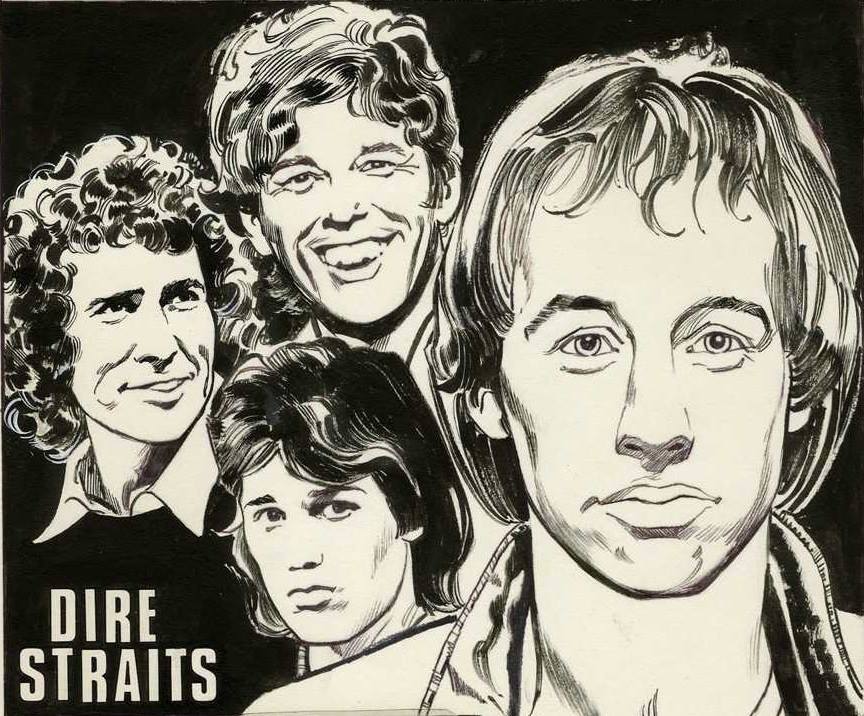
























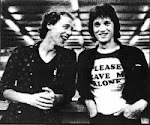

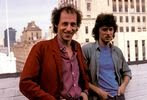


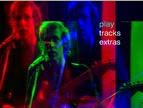

































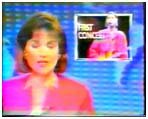


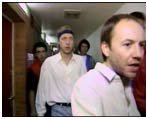
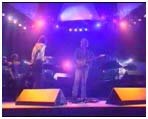






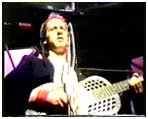



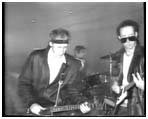
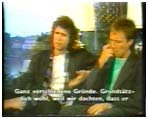
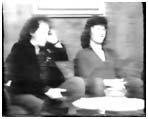



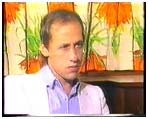

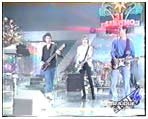

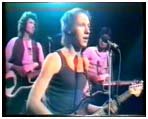




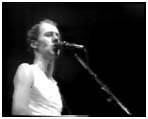
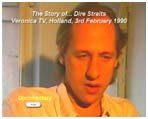

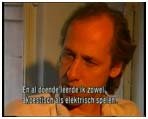
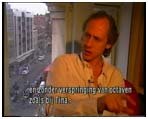

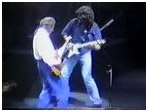
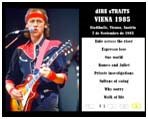

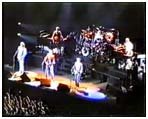

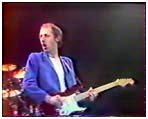

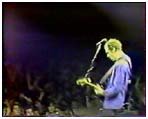
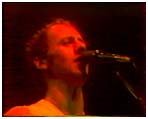

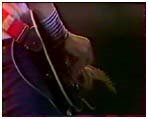
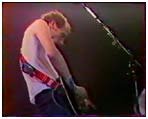
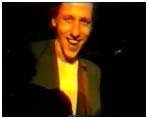
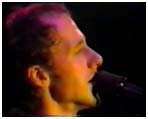
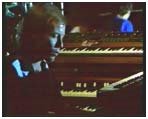
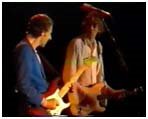


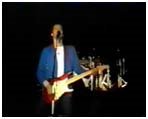
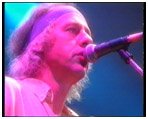

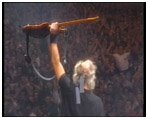

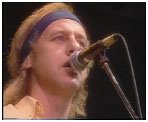

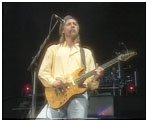
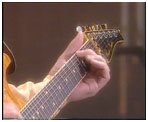
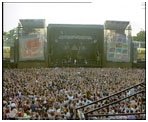
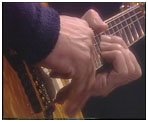
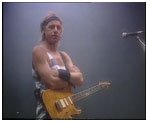

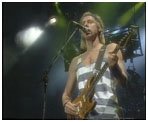
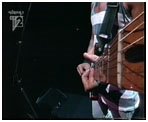


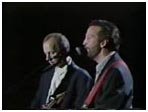

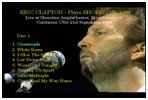


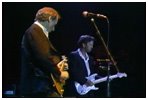
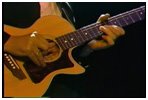
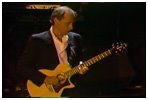



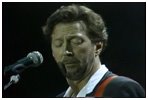


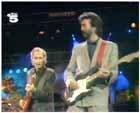

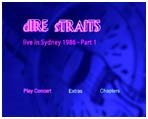
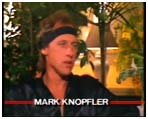






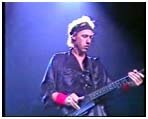

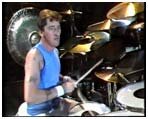
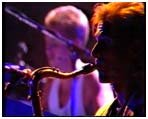
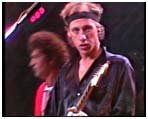
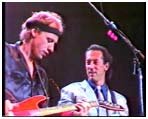
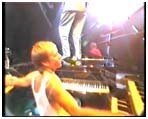




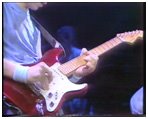
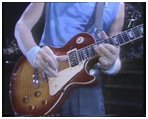
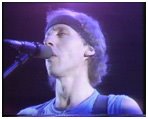

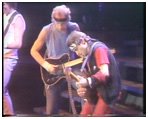
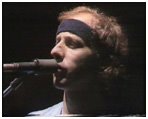

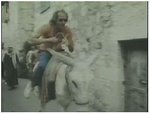
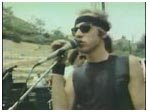
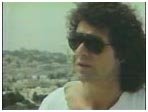

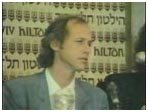


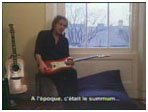
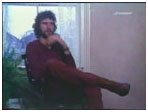

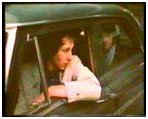

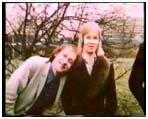

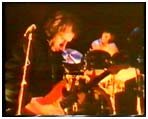
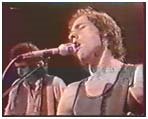

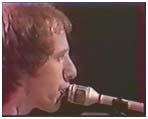


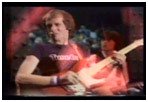


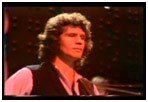
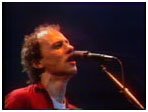
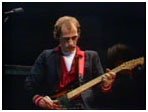

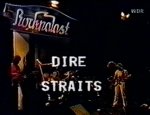


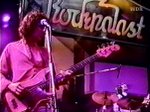

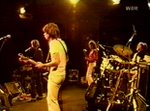
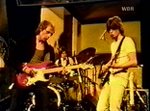

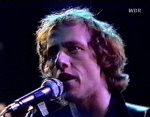





Nenhum comentário:
Postar um comentário